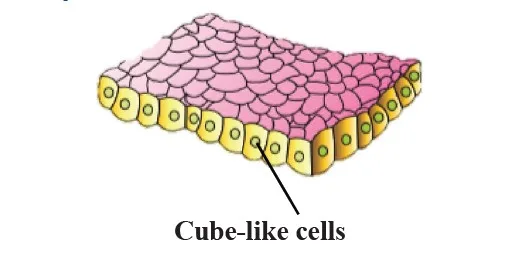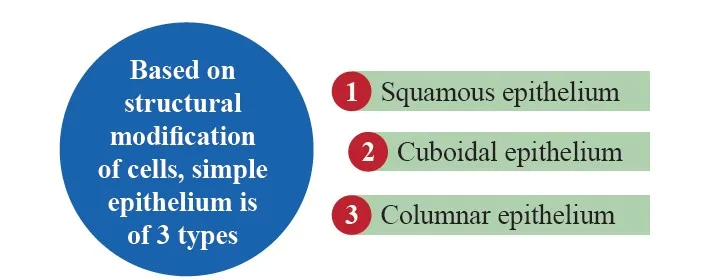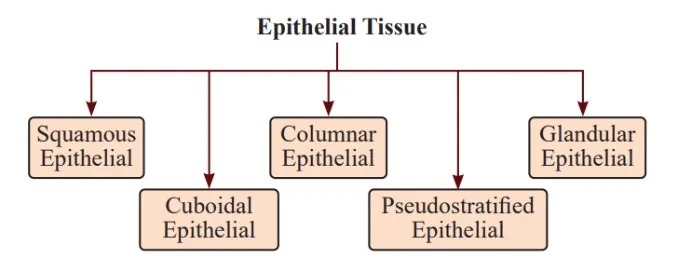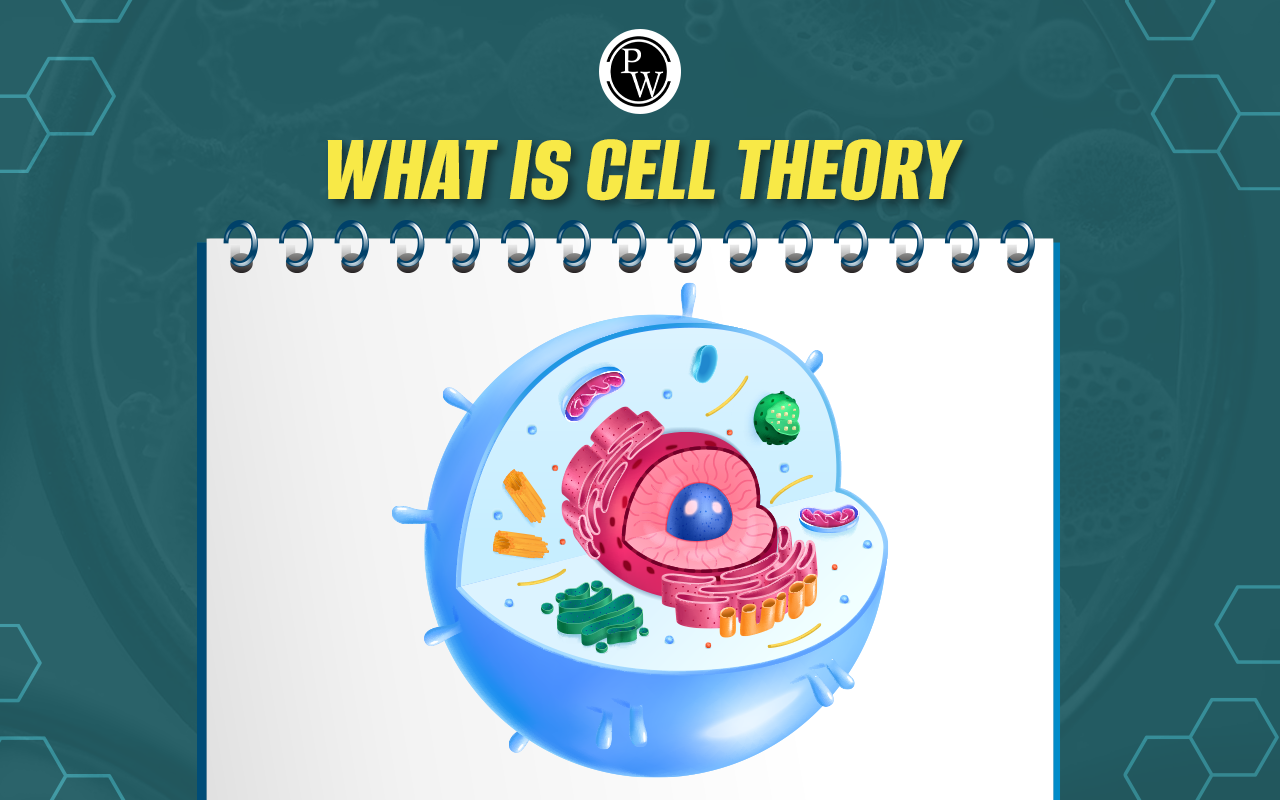
Epithelium Tissue: Every human cell is designed to carry out a particular function. Tissues are made up of related cells grouped according to their structural and functional characteristics. The human body contains four major types of tissues: epithelium, connective, neural, and muscular.
Epithelium tissue is found in large sheets that cover all external surfaces and line internal body cavities. It is found all over the body, covering body surfaces, lining body cavities and hollow organs, and making up the majority of glandular tissue. Epithelium tissues have a variety of functions, including excretion, secretion, protection, diffusion, absorption, filtration, and sensory reception. The following article provides detailed information on epithelium tissue, including epithelium tissue types and epithelium tissue functions, for the NEET Exam .
What Is Epithelium Tissue?
Epithelium tissue is an animal tissue composed of cells with a nucleus and membrane-bound organelles. Unlike plant cells, animal cells lack a cell wall, allowing them to be flexible. epithelium cells can change shape to perform specific functions. epithelium tissues are classified based on their shapes, sizes, and arrangements. These tissues are found all over the body, covering its surface and lining internal organs and cavities.
Candidates preparing for NEET should study the topic of the epithelium tissue in depth. NTA commonly asks important questions about the structural organisation in animal chapters, particularly from this topic.
Types of Epithelium Tissue
epithelium tissues are categorized based on the shape of their cells and the number of cell layers they have. Cell shapes can be squamous (flat and thin), cuboidal (boxy), or columnar (rectangular). The arrangement of cells can be single-layered (simple epithelium) or multi-layered (stratified epithelium). Pseudostratified epithelium appears to have multiple layers but has only one layer of irregularly shaped cells. Transitional epithelium can change shape and layer number depending on tissue stretch.
Epithelium tissues are vital components of animal bodies, forming protective barriers, secreting substances, and facilitating absorption. These tissues are classified based on cell shape and layer arrangement.
Structural Organisation in Animals MCQ
Classification Based on Cell Shape
1. Squamous epithelium tissue: Cells are flat and scale-like, allowing for easy passage of materials. Found in the lining of blood vessels and body cavities.
 3. Columnar epithelium tissue: Cells are tall and cylindrical, specialized for absorption and secretion. Line the digestive tract and parts of the respiratory tract.
3. Columnar epithelium tissue: Cells are tall and cylindrical, specialized for absorption and secretion. Line the digestive tract and parts of the respiratory tract.
Classification Based on Layer Arrangement
1. Simple epithelium tissue: Consists of a single layer of cells, providing a thin barrier for diffusion and filtration. Found in areas where absorption and secretion occur, such as the lining of the intestines and air sacs of the lungs.
 2. Stratified epithelium tissue: Consists of multiple layers of cells, offering protection against mechanical and chemical stresses. Found in the skin and lining of the mouth and esophagus.
2. Stratified epithelium tissue: Consists of multiple layers of cells, offering protection against mechanical and chemical stresses. Found in the skin and lining of the mouth and esophagus. Specialized Types of Epithelium Cells
- Transitional epithelium tissue: Found in the urinary bladder, ureters, and urethra. It allows the organs to stretch and maintain barrier function.
- Glandular epithelium tissue: Specialized for secretion, found in glands throughout the body, such as sweat glands and salivary glands.
- Olfactory epithelium tissue: Contains receptors for detecting odours, located in the nasal cavity.
Structure of Epithelium Tissue
The structure of epithelium tissue consists of a tightly packed layer of cells. One side of the tissue is exposed to the external environment or body fluids. In contrast, the other side is attached to underlying tissue by a membrane of fibres and polysaccharides secreted by epithelium cells.
There is minimal intercellular material between epithelium cells, and specialized junctions link them:
- Tight junctions: Prevent leakage across tissues.
- Adhering junctions: Keep neighbouring tissues firmly connected.
- Gap junctions: Facilitate the movement of ions and molecules between cells.
Epithelium cells form membranes, which consist of a layer of epithelium tissue and underlying connective tissue. There are two main types of epithelium membranes:
- Mucous membrane (mucosa): Contains goblet cells that secrete mucus for lubrication, protection, and facilitating the movement of materials. It lines body cavities that open outside the body, such as the respiratory and digestive tracts.
- Serous membrane: Lines body cavities that do not open outside the body, such as the pleural and pericardial cavities. These membranes secrete fluid into the cavity and are made of simple squamous epithelium.
Glands are composed of epithelium cells and are classified into two types:
- Exocrine glands: Secrete their products into ducts, such as sweat glands.
- Endocrine glands: Release their products directly into the blood or intestinal fluid, such as hormones.
Functions of Epithelium Tissue
Epithelial tissues perform several important functions in the body:
- Protection: They protect underlying tissues from radiation, desiccation (drying out), toxins, pathogens (disease-causing organisms), and physical trauma.
- Regulation and exchange: They regulate and exchange chemicals between underlying tissues and body cavities.
- Secretion: They secrete hormones into the circulatory system and produce substances like sweat, mucus, enzymes, and others delivered by ducts.
- Sensation: They provide sensation, allowing us to feel touch, pressure, and other stimuli.
- Absorption: In the lining of the digestive canal, they absorb water and digested food, helping digestion and nutrient absorption.
| NEET Exam Important Links | |
|---|---|
| NEET Biology Syllabus | NEET Biology Diagrams |
| NEET Biology MCQ | NEET Biolofy Chapter wise Weightage |
| NEET Biology Notes | NEET Previous Year Question papers |
EMRS Admit Card 2023 FAQs
What is the role of epithelium in the body?
Why is it called epithelium?
What is the definition of epithelium?
Who coined the term epithelium?
What are the key characteristics of epithelial tissue?











